Garden arches are more than decorative frames; in 2025 they are multifunctional gateways that organize space, lift plants skyward, and even light evening gatherings. Trends range from affordable DIY PVC trellises celebrated on social media for maximizing harvests to luxurious fabric-draped wedding arches that double as outdoor art installations. Whether you crave cottage whimsy, sleek modern lines, or edible espaliers, the right Garden Arch can turn an ordinary path into a memorable experience and solve practical problems like shade, privacy, or vertical growing. Explore the 20 ideas below and discover which structure sparks your imagination and fits your yard’s budget, climate, and style.
1. Classic Wooden Garden Arch for Cottage Charm
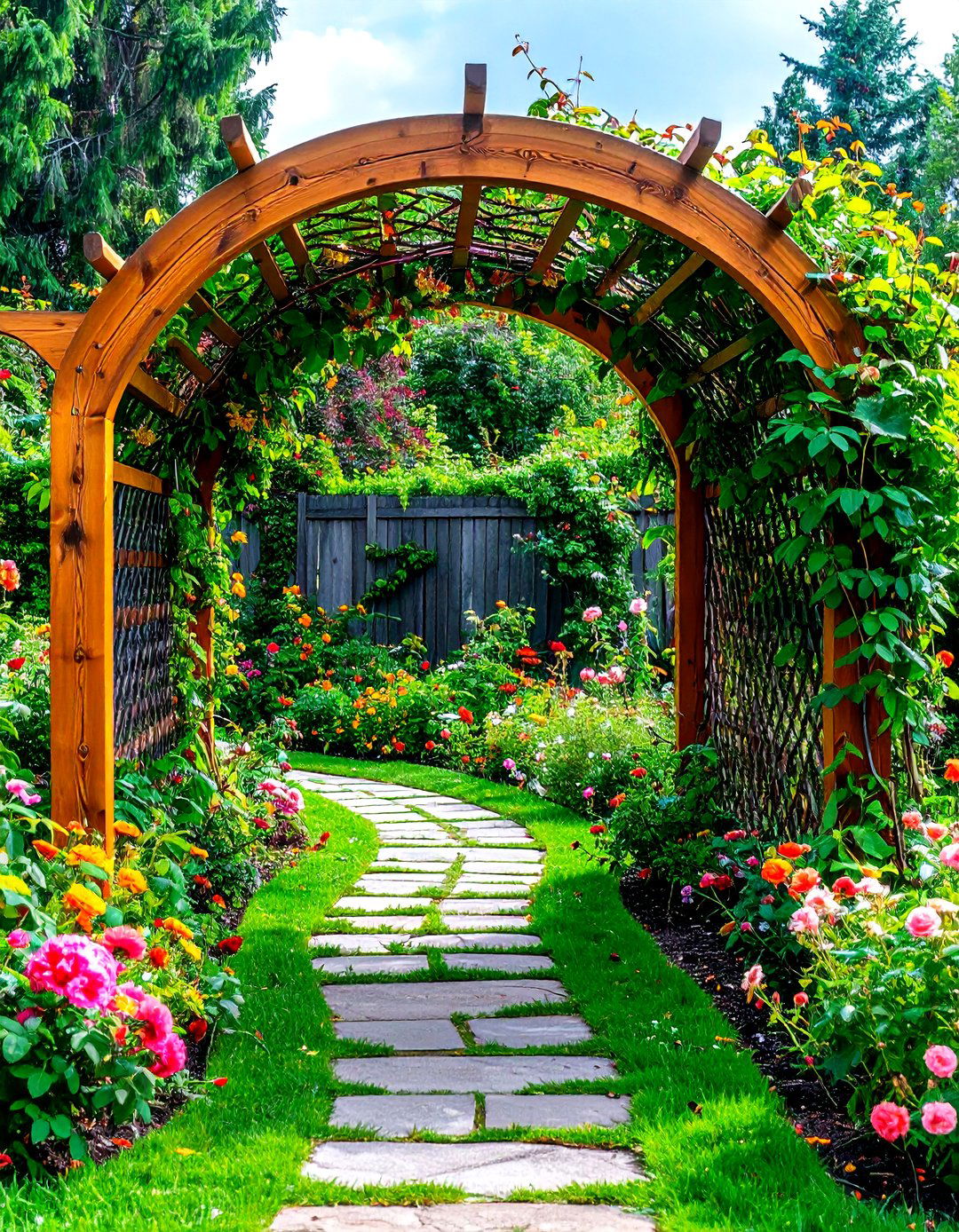
A sun-washed wooden Garden Arch instantly evokes cottage romance, and building one is simpler than you think. Start with pressure-treated posts or reclaimed beams cut to shoulder height; add curved top rails for a graceful silhouette and brace them with galvanized bolts for longevity. Coat the timber with a breathable exterior stain so the structure weathers attractively instead of rotting. Situate it where morning light backlights the opening, then staple wire mesh to the uprights and train sweet peas or climbing roses along gentle horizontals. Regularly tie stems to encourage full blooms and easy deadheading, securing that storybook entrance all season.
2. Metal Garden Arch Framing Climbing Roses

The clean lines of a powder-coated metal Garden Arch offer an elegant frame for climbing roses while requiring far less maintenance than timber. Opt for galvanized steel sections that bolt together; their slender profile delivers strength without bulk, and factory finishes resist rust for decades. Place the arch where prevailing winds help ventilate foliage, reducing mildew on rose canes. Before planting, attach stainless steel eyelets and thread flexible wire in a lattice so canes can be fanned out horizontally—an arrangement that multiplies blooms and simplifies pruning as designers recommend. Finish by mulching roots and feeding with slow-release fertilizer each spring.
3. Recycled Doorway Garden Arch Gateway
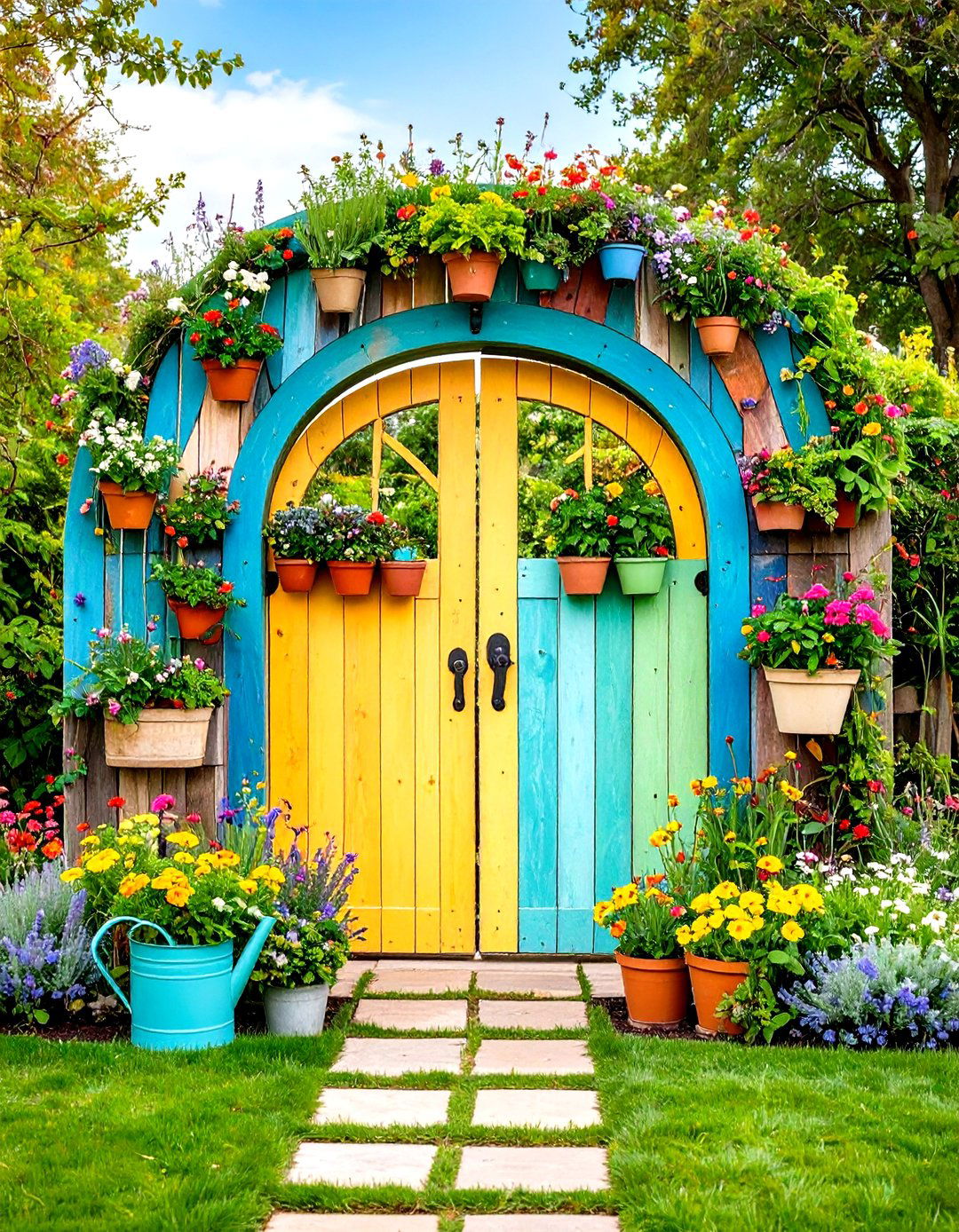
Consider giving discarded interior doors a second life by turning them into a character-rich Garden Arch. Hinge two solid-core doors together to form the sidewalls, screw a salvaged header across the top, then sand and seal the wood so it can handle outdoor moisture. A coat of heritage paint highlights weathered panels and iron hardware, celebrating imperfections instead of hiding them. Inside the frame, mount narrow shelves or peg hooks to display potted herbs and lanterns. Because the arch weighs more than a store-bought trellis, drive half-inch rebar stakes through the base into compacted soil for stability—a proven tip from upcycling enthusiasts.
4. Living Willow Garden Arch That Grows with You
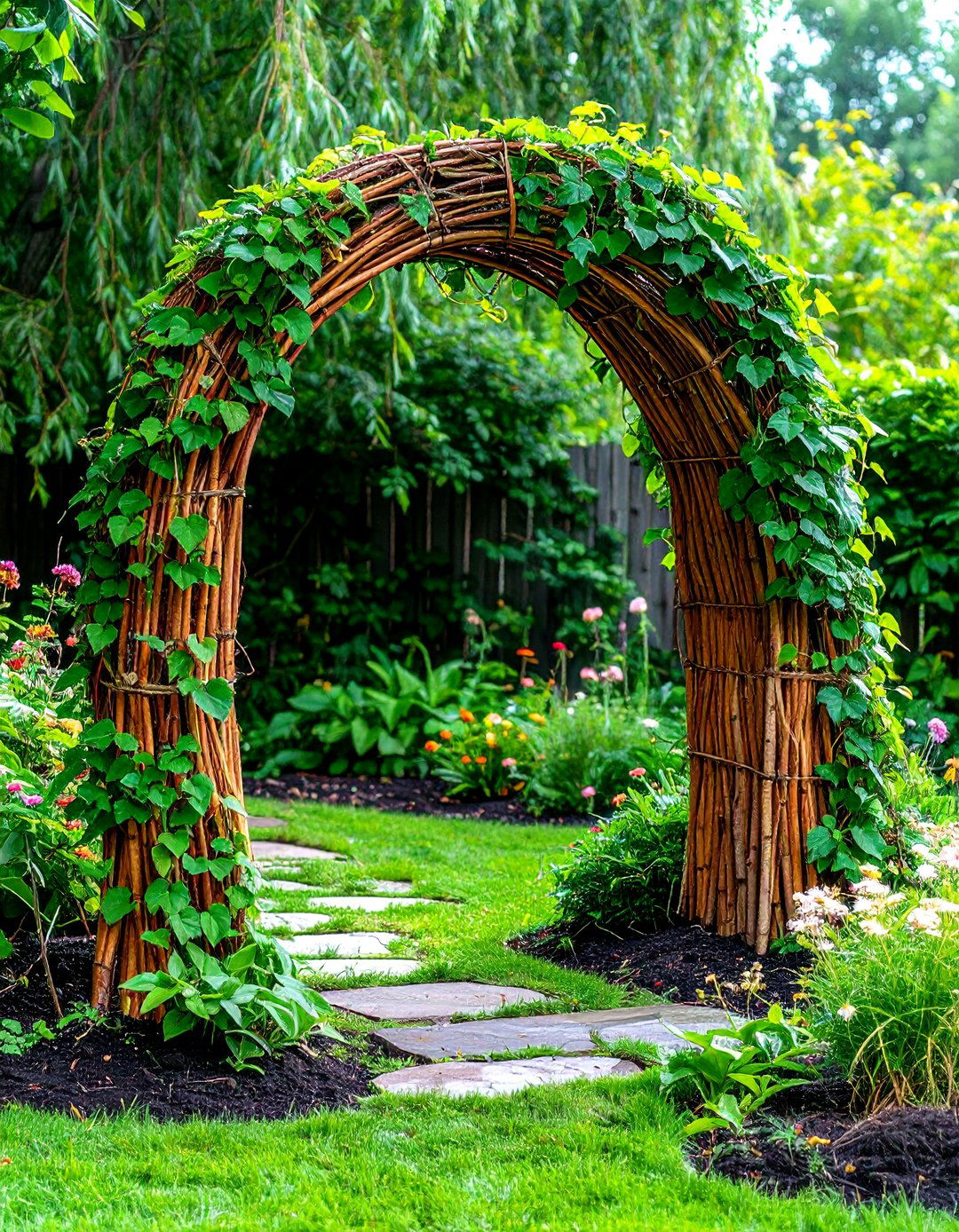
Unlike static structures, a living willow Garden Arch thickens and leafs out each year, blurring the line between architecture and plant. Push freshly cut, pencil-thick rods into damp soil in late winter, bending pairs to meet overhead and tying with jute twine. Within weeks, the rods set roots and sprout, knitting joints together naturally. To manage vigor, pinch out tips in midsummer and coppice every three years, shaping new shoots into decorative lattices. Growers caution against planting willow near drains or vegetable beds because its thirsty roots travel far for water, so choose placement responsibly.
5. Sleek Steel Garden Arch for Modern Minimalists
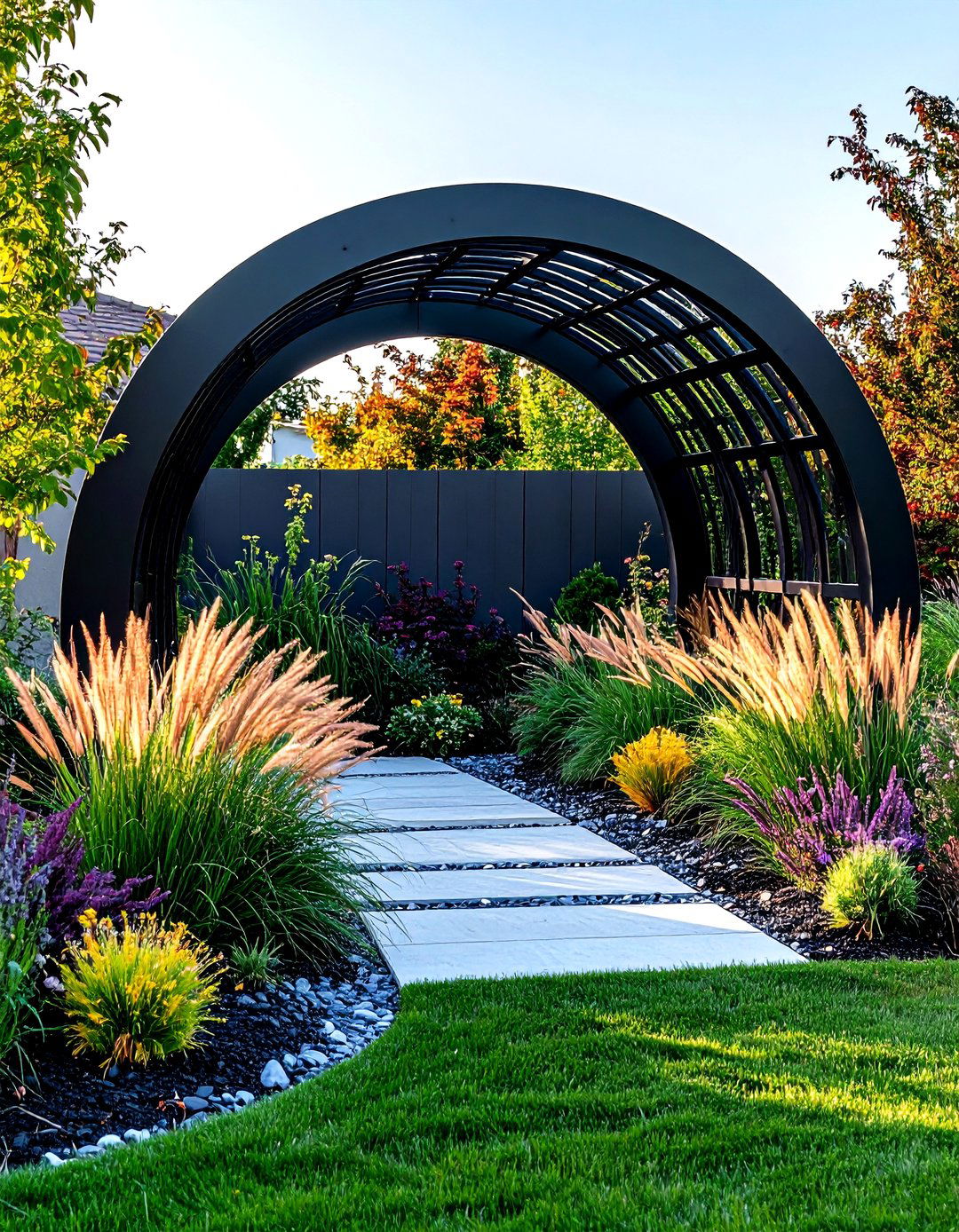
The silhouette of a matte-black steel Garden Arch suits contemporary landscapes where crisp geometry matters. Prefabricated modular sections slip together with hidden screws, creating an uninterrupted curve that looks laser-cut from a single sheet. Because steel carries more load than wood, you can span wider paths—up to two meters—without bulky supports. Pair the arch with ornamental grasses or monotone beds; the dark frame sharpens soft foliage and mirrors architectural window mullions. Guide a single vigorous clematis through slim welded rings for seasonal drama, a trick lauded by garden stylists.
6. Rustic Log Garden Arch for Woodland Paths

Walking through a rustic log Garden Arch feels like stepping into an enchanted forest. Collect straight saplings or cedar posts of similar diameter, peel the bark for quicker drying, and notch the ends so they interlock in a simple mortise-and-tenon pattern. Suspend a bundle of thinner branches overhead in a loose bow to echo the surrounding canopy. Leave the wood unfinished; it will silver naturally and host moss, enhancing the woodland illusion. Underplant with ferns and foamflower to blur hard edges, and set flat stones as stepping pads so guests can wander without harming fragile roots.
7. Solar-Lit Garden Arch for Evening Drama
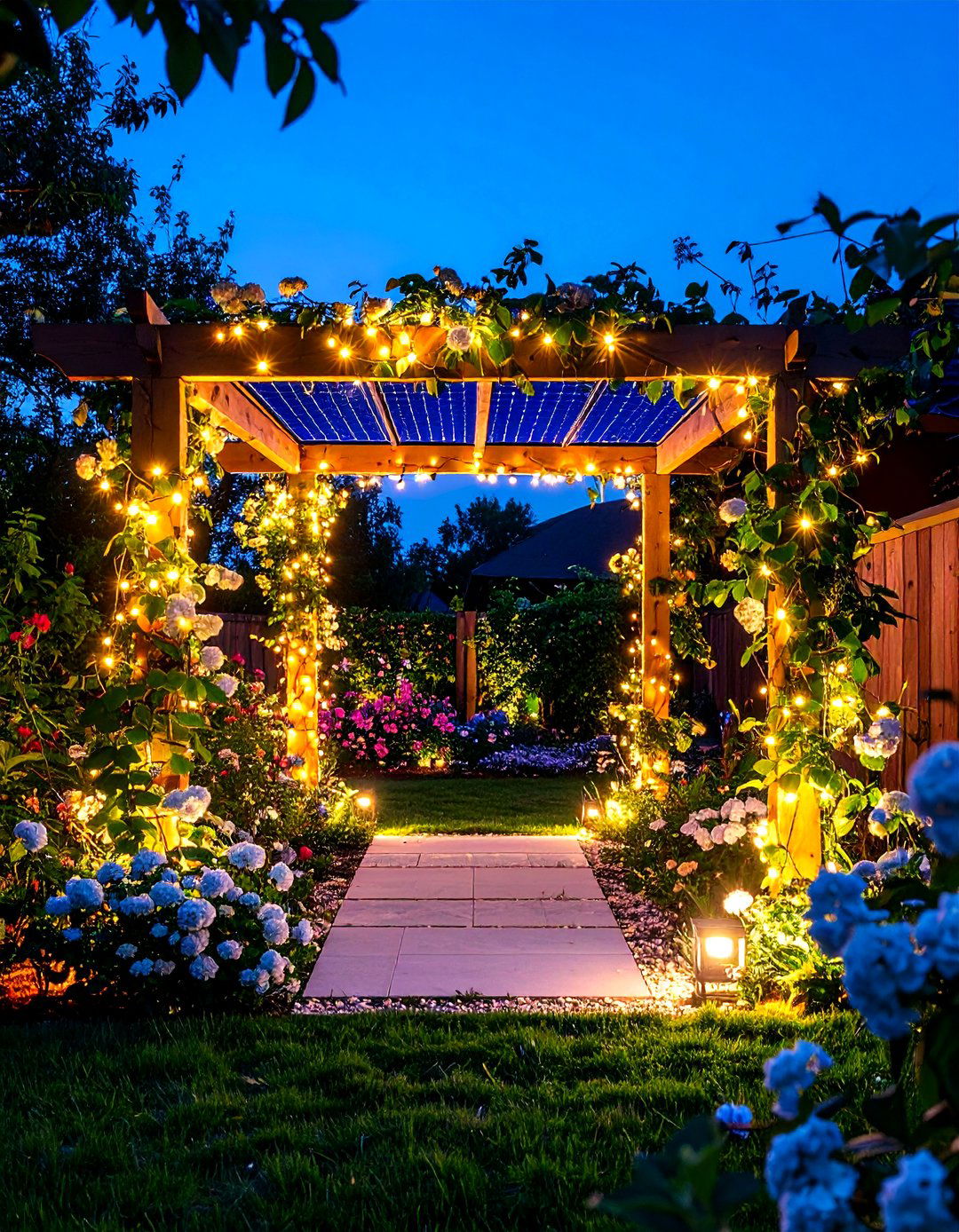
A Solar-Lit Garden Arch keeps the party going long after sunset without adding to your energy bill. Clip warm-white LED strips or fairy lights to the underside, pairing them with motion-sensing solar panels that snap onto the uprights. Modern panels store enough power for eight hours of glow and switch on automatically at dusk, so you can forget about timers. Retail surveys show that well-placed solar lighting can lift property value because it extends usable outdoor space and boosts curb appeal. Plant night-scented jasmine nearby so fragrance drifts through the illuminated curve.
8. Fruit-Tree Espalier Garden Arch Tunnel
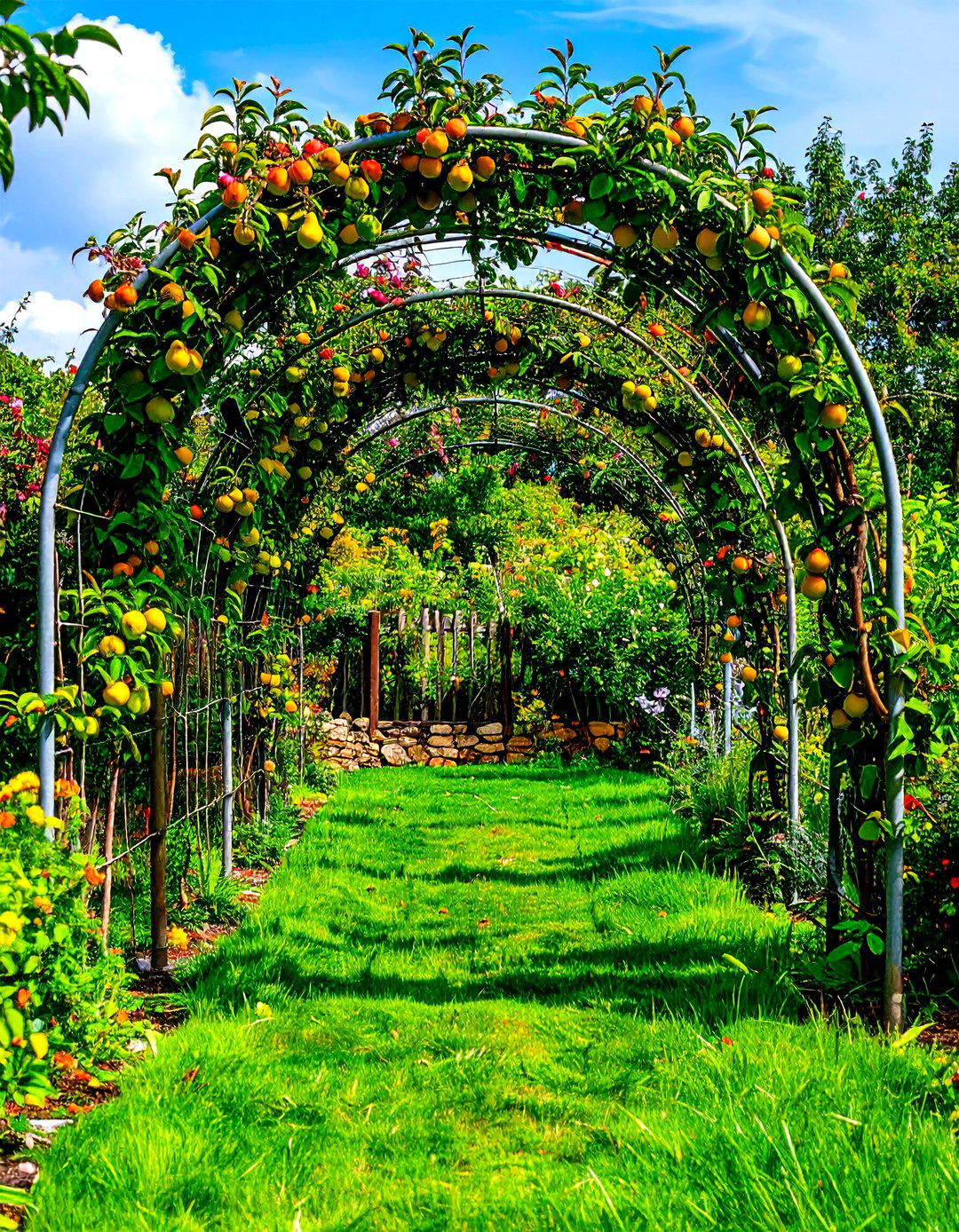
For gardeners short on ground space, a fruit-tree espalier Garden Arch creates a living tunnel that yields both shade and snacks. Erect a sturdy metal frame, then plant semi-dwarf apples or pears at each base. Tie shoots along horizontal wires spaced thirty centimetres apart, bending new growth upward at the crown to meet its opposite twin. This disciplined training opens leaves to sunlight, improving colour and flavour while making pruning and harvest almost effortless. After blossom drop, thin fruit clusters so limbs aren’t overloaded mid-summer, keeping both structure and crop in balance.
9. Wisteria Pergola Garden Arch for Perfumed Shade

The cascading clusters of a wisteria-draped Garden Arch turn any terrace into an intoxicating retreat. Choose a heavy pergola-style arch; mature wisteria can weigh hundreds of kilos, so anchor legs with steel ground spikes or in concrete footings as installation guides advise. Train two leading shoots up each post, spiralling clockwise, and remove side growth to concentrate energy into flowering racemes that can exceed thirty centimetres. Feed with low-nitrogen fertilizer in early spring and prune twice yearly—once in midsummer, again in winter—to promote bud formation and extend bloom.
10. PVC Pipe Garden Arch on a Budget
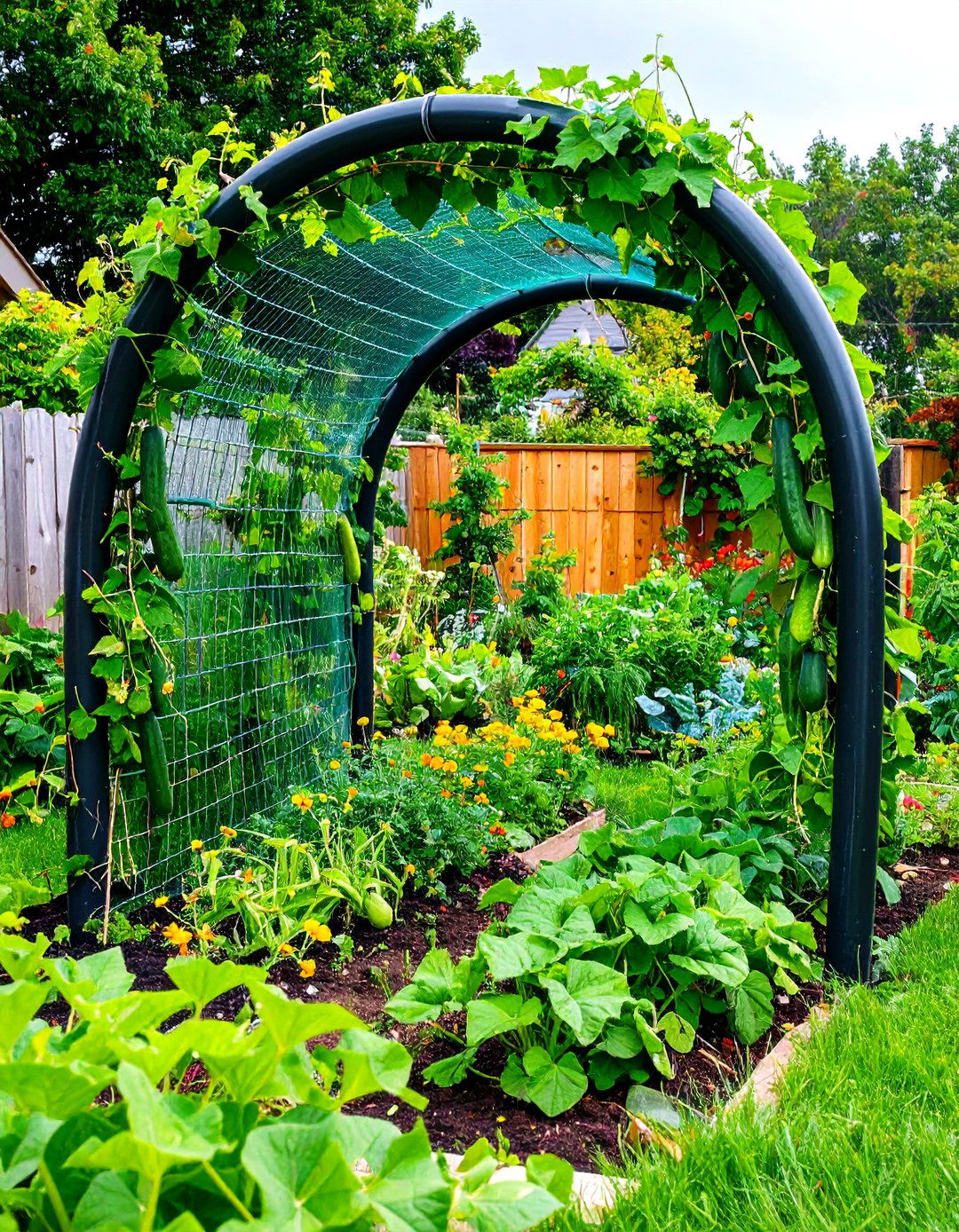
Budget builders can assemble a light yet sturdy PVC-pipe Garden Arch for less than the cost of a single metal panel. Push two-meter lengths of schedule-40 pipe onto rebar stakes hammered deep, then bend the tops together and join with cross-tees. To reinforce, slip flexible conduit or bamboo inside each pipe if high winds are common, a clever hack shared widely on social media. Coat the arch with matte-black plastic-safe spray paint to mimic wrought iron, and weave nylon netting between uprights for cucumbers, loofahs, or sweet peas to scramble skyward.
11. Bamboo Garden Arch for a Zen Entrance
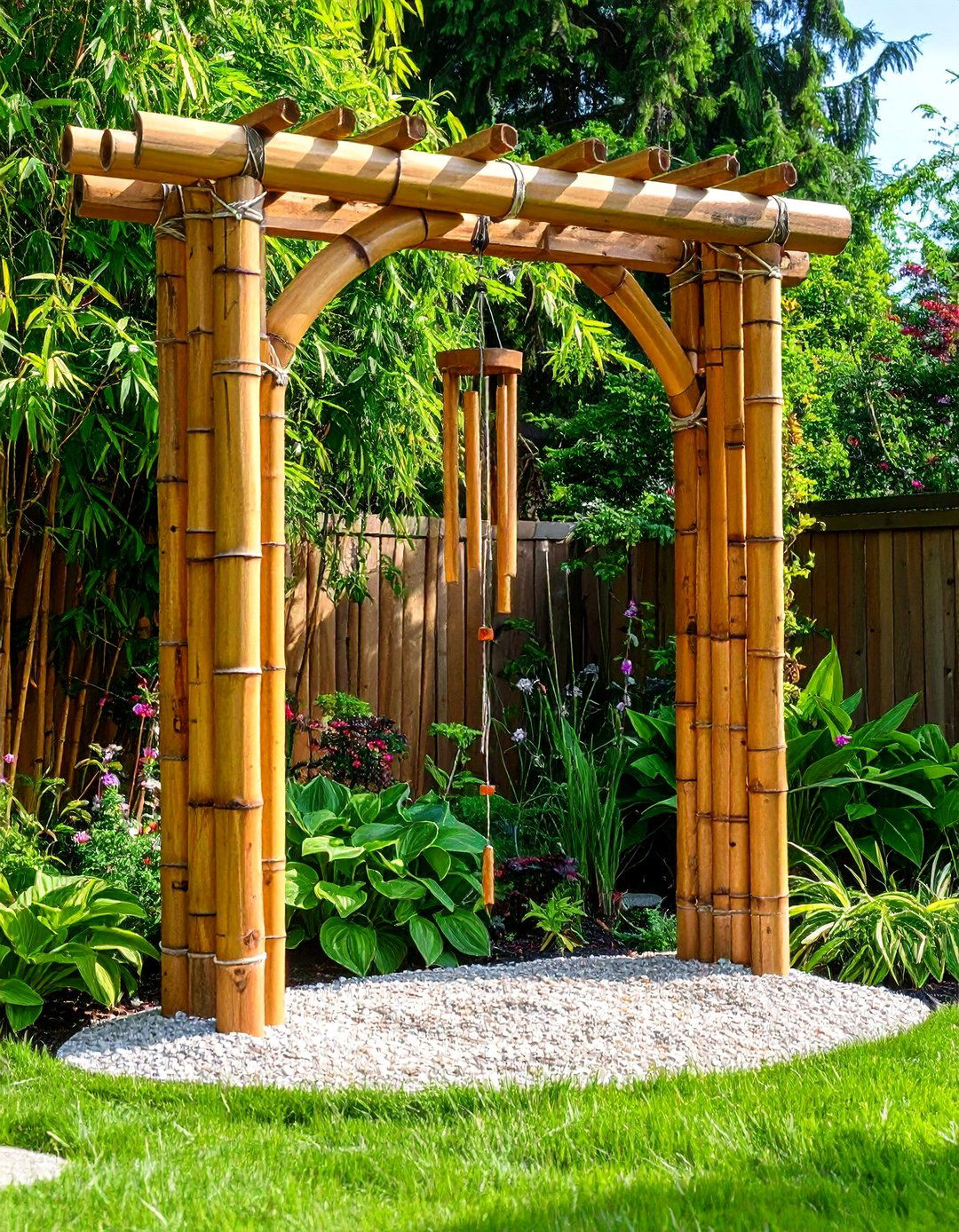
A whisper-light bamboo Garden Arch introduces instant Zen without nails or screws. Select thick-walled culms cut in winter and lash them with nylon cord in the traditional square-lashing pattern for invisible strength. Offset joints so no two fall on the same plane—a carpenter’s secret that prevents shear. Slide sand-filled segments over rebar stakes to anchor the legs securely. Finish by planting clumping dwarf bamboo or shade-loving hostas to soften the base, and hang a wooden wind chime from the apex to emphasise the arch’s calming resonance.
12. Upcycled Bike-Wheel Garden Arch
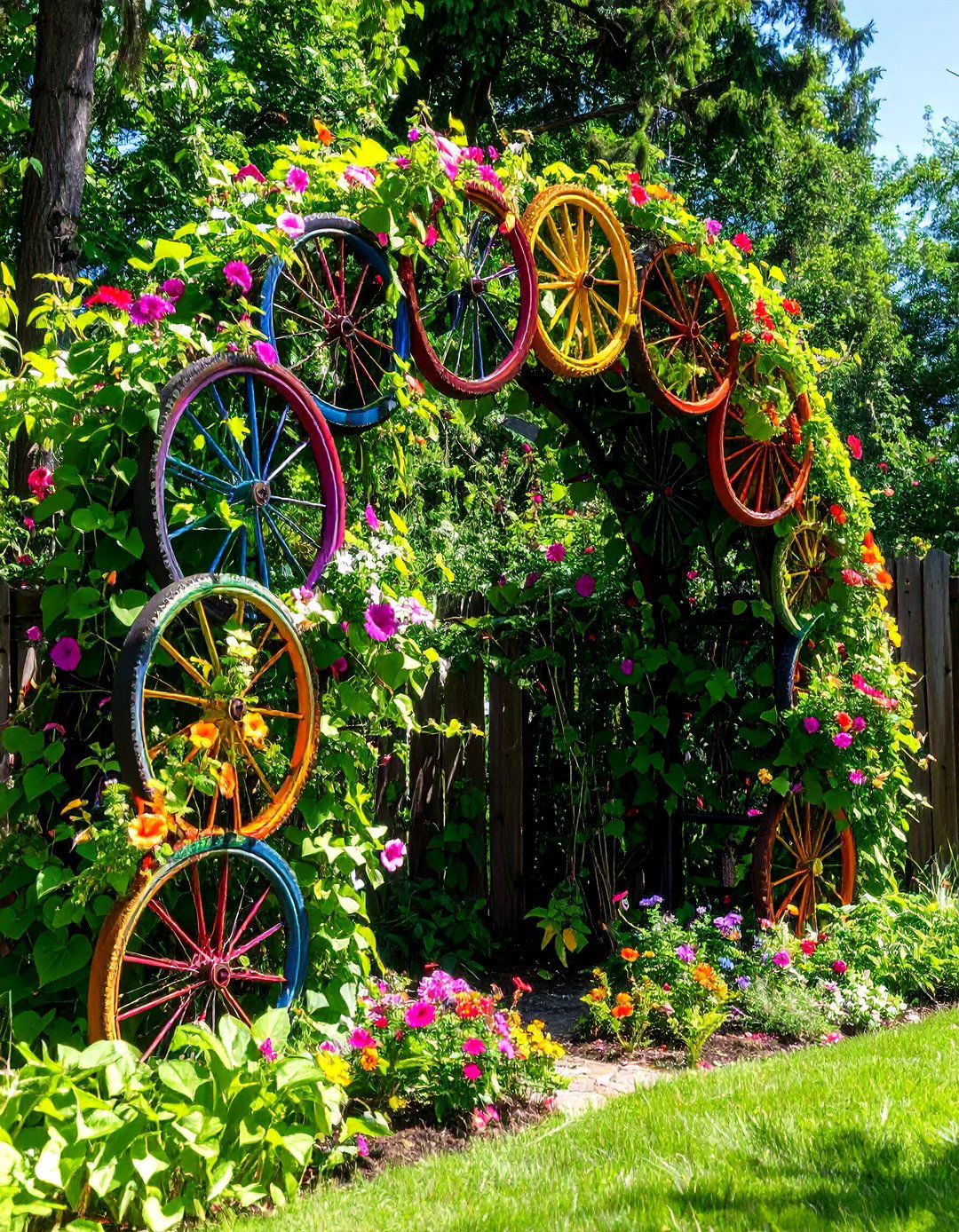
Surprisingly, discarded bicycle wheels can become the spokes of a whimsical Garden Arch that celebrates motion even when still. Weld or bolt two conduit uprights to salvaged wheel rims, then continue stacking rims to form a gentle parabola overhead. The hollow rims provide anchor points for zip-tied twine, letting sweet peas or morning glories climb with ease. Spray the finished arch in bright enamel to prevent rust and add playful colour. At night, tuck battery fairy lights inside the hub spaces so the structure glows like orbiting moons.
13. Vintage Iron Gate Garden Arch Statement
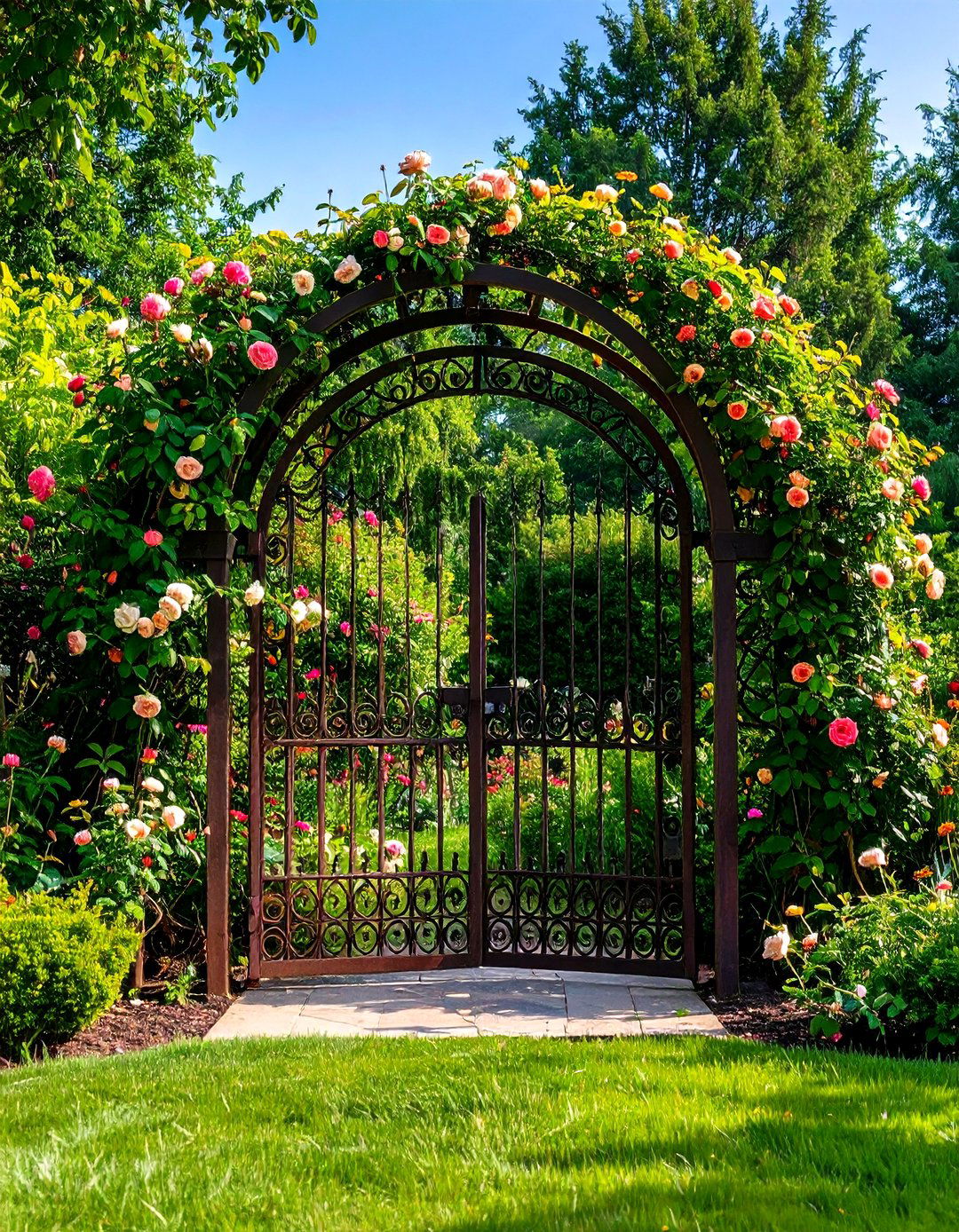
Nothing says grand entrance like a Garden Arch fashioned from a reclaimed wrought-iron gate. Scout salvage yards for panels with intact scrollwork, then sandblast to bare metal and treat with clear anti-corrosion wax so the patina shines through. Mount the gate between two steel posts sunk in concrete, adding discreet brackets to lock the hinge side. Properly finished iron resists warping and frost damage, making the investment worthwhile for gardeners who value permanence. Pair with heirloom roses or espaliered figs to complete the timeless tableau.
14. Succulent-Covered Garden Arch for Dry Gardens
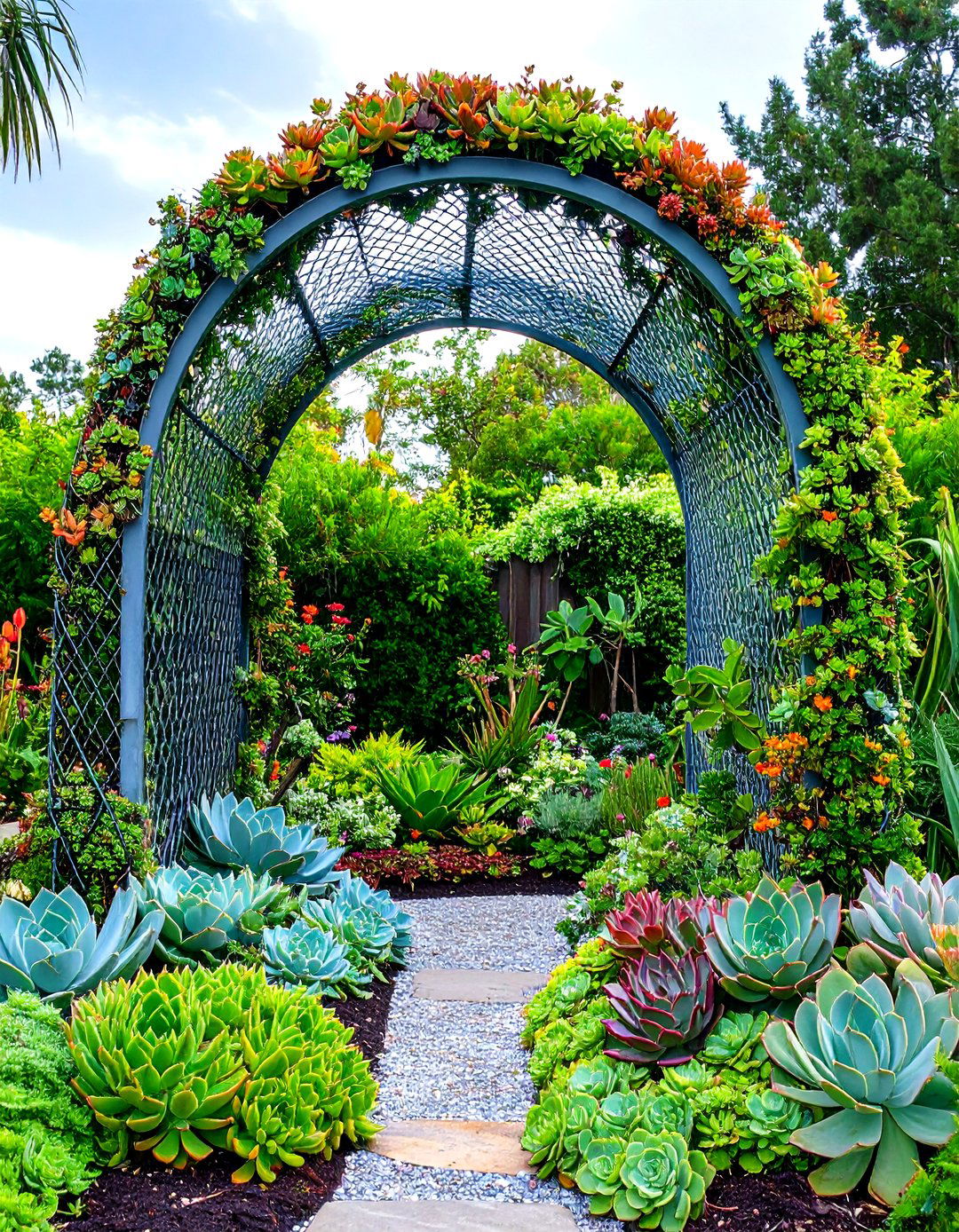
In water-wise landscapes, a succulent-covered Garden Arch delivers drama without draining the rain barrel. Wrap a metal mesh arch in coconut-fiber liner, pack it with a gritty soil mix, and insert echeveria, sedum, and hens-and-chicks, spacing rosettes five centimetres apart for rapid knitting. Mist daily for two weeks until roots anchor, then reduce watering to once every ten days. Specialist growers offer mixed trays of hardy drought-tolerant succulents to ensure colour and texture variation throughout the year.
15. Swing-Seat Garden Arch for Relaxation
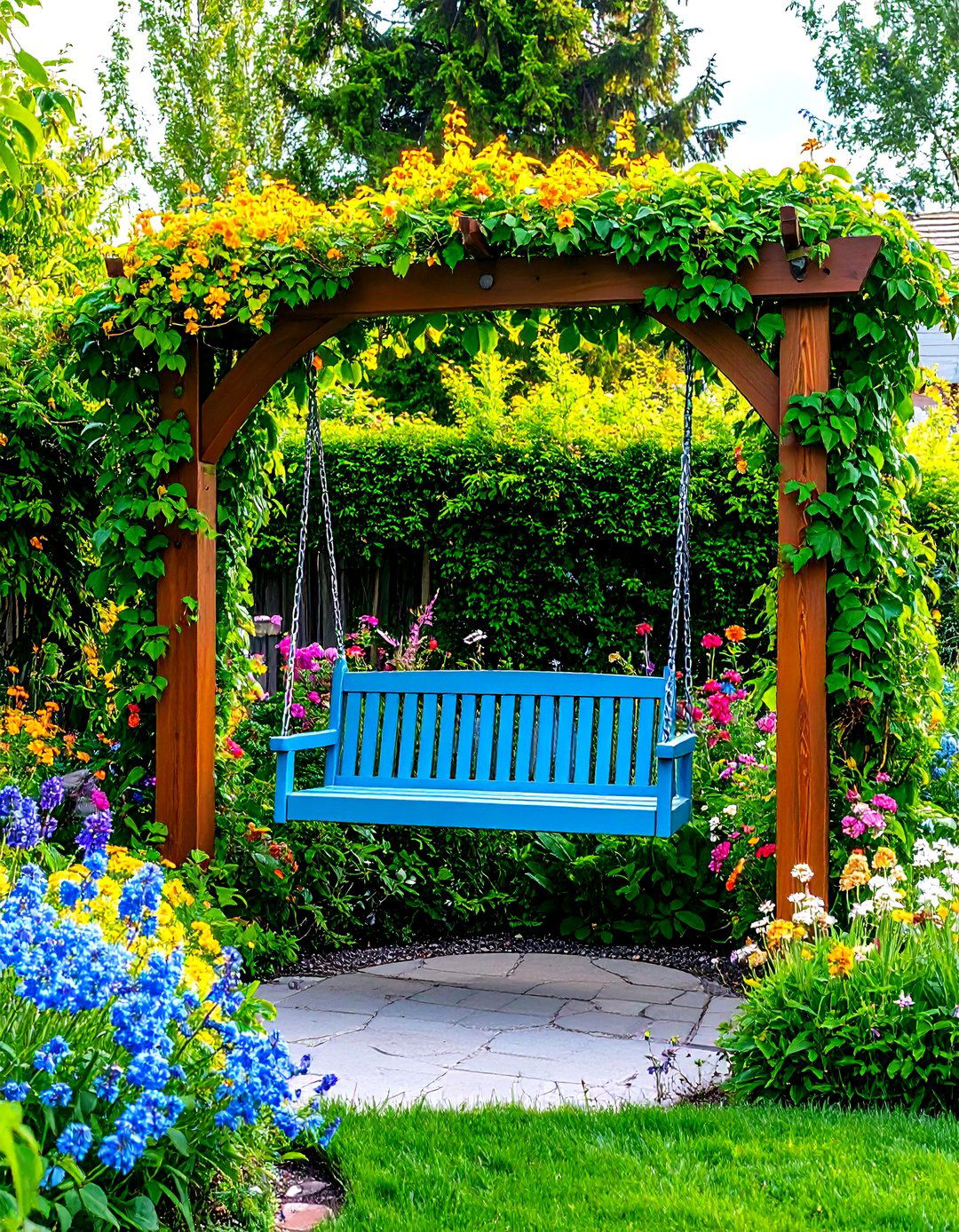
By combining seating and structure, a swing-seat Garden Arch transforms a quiet corner into the yard’s most coveted spot. Choose a timber or steel A-frame rated for at least 200 kg, then suspend a weather-resistant bench on stainless chains from the overhead beam. Ensure the swing’s pivot sits slightly forward of centre so shoes clear the legs, and lay a pea-gravel pad below to absorb motion. Plant star jasmine on either side; the leaves create privacy curtains while perfume drifts gently as the seat moves. Add a small side table for iced tea, and you’ve built a mini vacation.
16. Vegetable Tunnel Garden Arch for Abundant Harvests
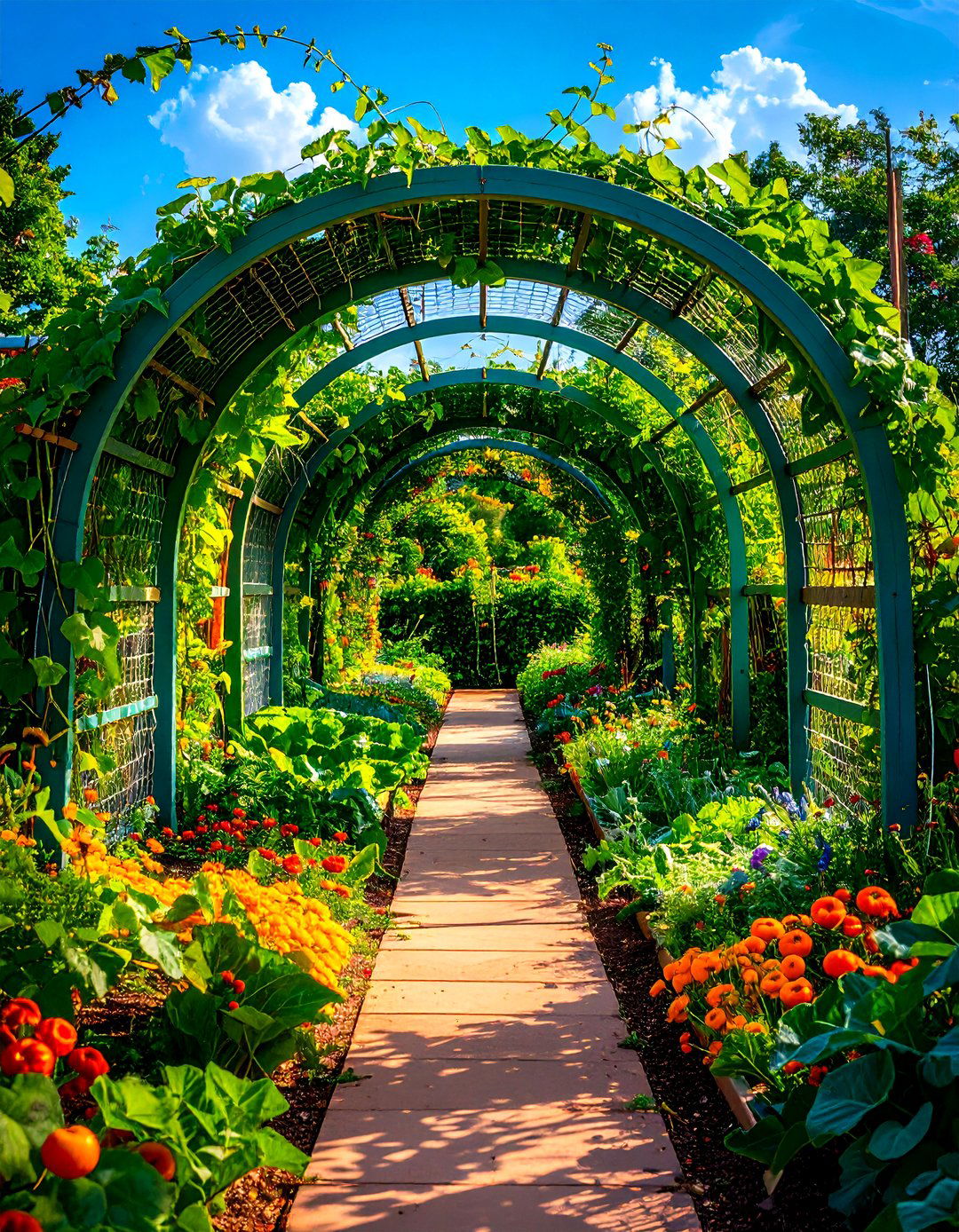
A Vegetable Tunnel Garden Arch lifts sprawling crops off the ground while creating a shaded walkway beneath. Bend two cattle panels into an elongated hoop and secure the ends to T-posts inside raised beds, exactly as DIY tutorials demonstrate. Grow cucumbers, pole beans, or gourds up the mesh; hanging fruit stays clean, is easier to pick, and receives uniform sunlight—benefits celebrated by millions of budget-minded growers online. Top-dress beds with aged compost each season and rotate legumes with heavy feeders like squash to keep soil fertile.
17. Gothic Stone Garden Arch as Focal Ruin

A Gothic stone Garden Arch introduces a touch of romantic ruin that looks centuries old. Cast-stone blocks with pointed lancet curves arrive ready to assemble on a compacted gravel pad. Dry-fit pieces to align keystones, then set with exterior-grade thin-set mortar, raking joints for a time-worn profile. Plant evergreen ivies at the base so foliage drapes around the arch yet never fully hides the crisp silhouette. Uplight the inside curve with a narrow-beam spotlight to throw dramatic shadows that emphasise the medieval geometry.
18. Foldable Wedding Garden Arch for Events

Event hosts craving flexibility swear by a foldable wedding Garden Arch that packs flat between celebrations. Lightweight aluminium segments connect with wing nuts, and fabric sleeves hide the joints for a seamless look. Designers note that layered chiffon, velvet, or fringe drapes are among 2025’s most influential décor moves, adding softness and colour gradients outdoors. To repurpose the arch after the party, replace fabric with ivy garlands and battery lights, and drive removable anchor spikes through base plates to withstand breezes.
19. Moss-Covered Natural Garden Arch

A moss-covered Garden Arch blends into shaded borders and provides a microclimate for ferns. Build a wire-mesh arch, drape it with burlap, and pack sheet moss into the weave, misting thoroughly to start capillary action. Keep the arch shaded and humid for the first month; daily watering encourages moss to pin to the burlap. Over time, spores spread, creating a living green velvet that insulates the framework and muffles garden sounds. Forego fertilizer and remove fallen leaves gently with a soft brush to prevent decay.
20. Fabric-Draped Garden Arch for Seasonal Flair

These days, a fabric-draped Garden Arch isn’t just for weddings; homeowners are embracing textiles to refresh outdoor rooms with the seasons. In spring, gauzy voile panels catch every breeze, adding movement and diffusing harsh light; by winter, rugged canvas can shelter a patio heater and create a snug alcove. Stylists recommend layering contrasting textures—linen over velvet—for depth and colour harmony. Swap panels quickly using snap hooks sewn into the hems, a technique borrowed from DIY arch tutorials. Remove fabric before storms, dry fully, and store in breathable bags to prevent mildew.
Conclusion:
From fairy-lit metal frames to living willow tunnels, these Garden Arch ideas prove that any budget, climate, or aesthetic can support a striking gateway. Choose durable materials, anchor legs securely, and match plants or fabrics to the arch’s strength and style. Whether you harvest beans from a vegetable tunnel, sip tea beneath a swing seat, or watch moonlight spill through a Gothic stone curve, the right arch organizes space while adding vertical interest and fragrance overhead. Bring one of these concepts home, and your garden’s entrance will tell a story before visitors take a single step.






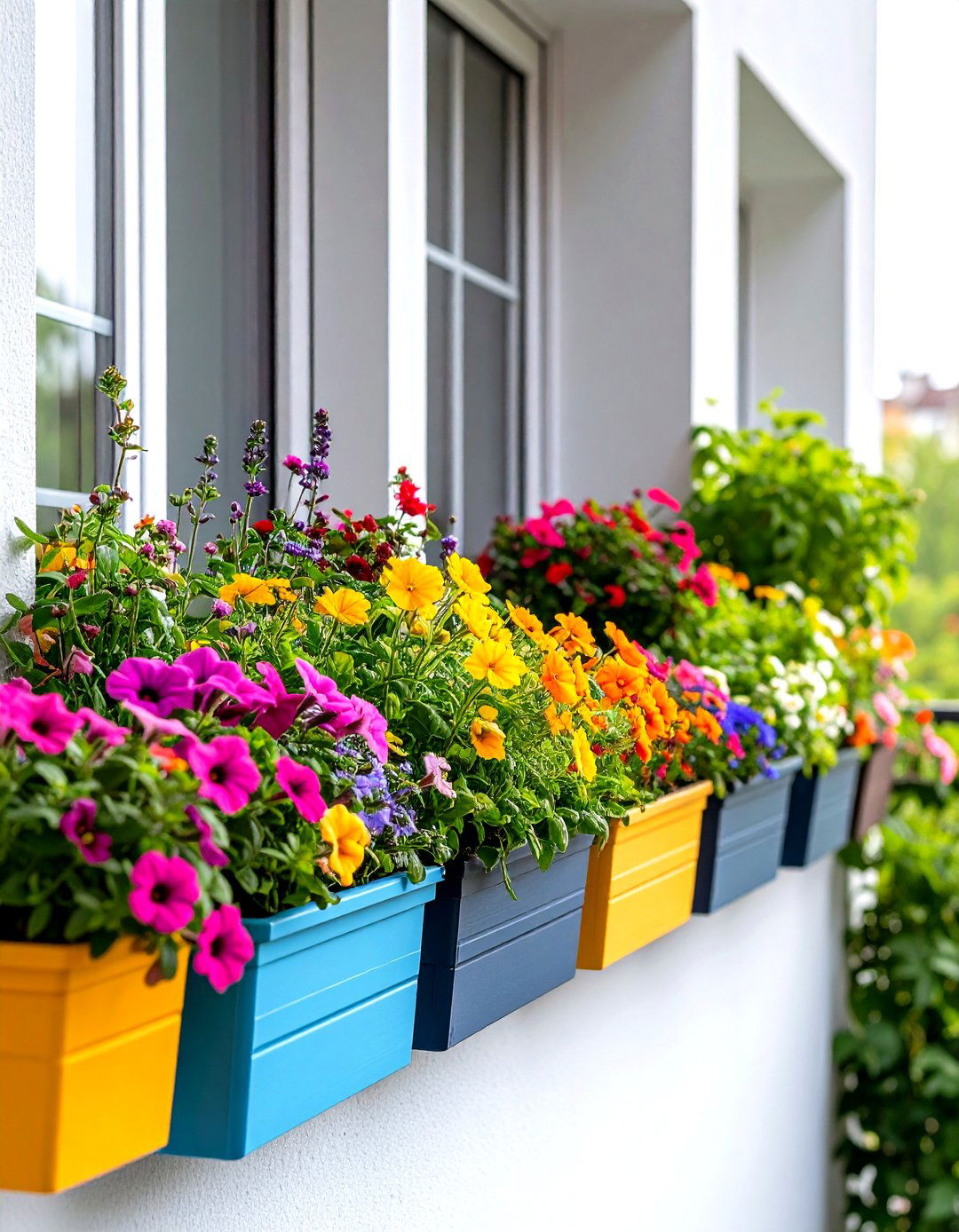






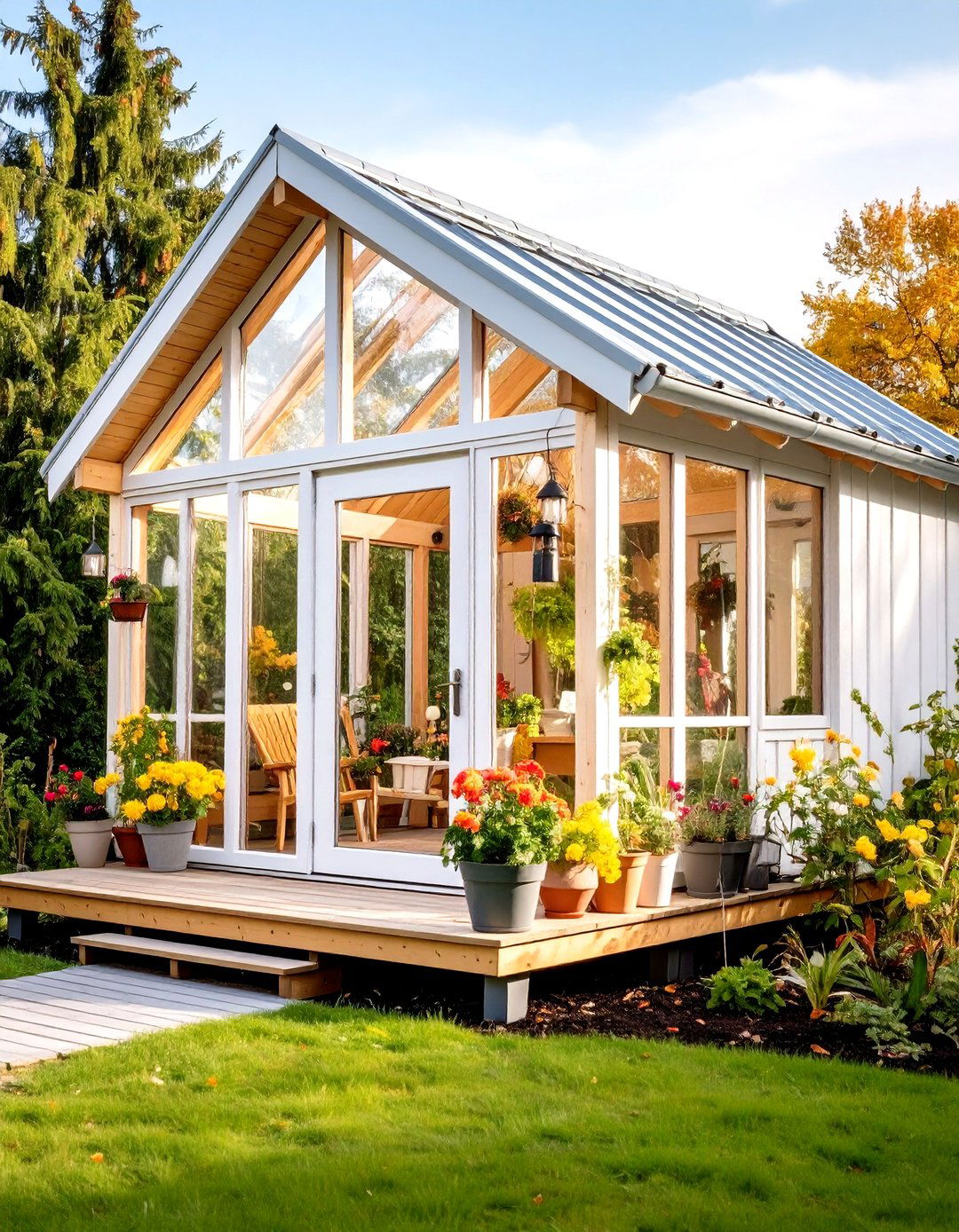


Leave a Reply